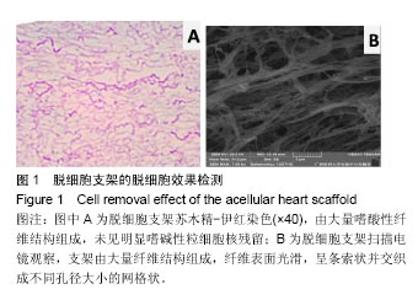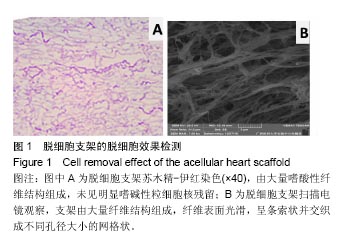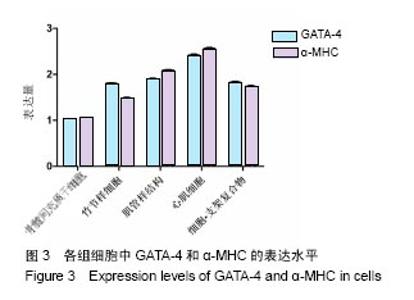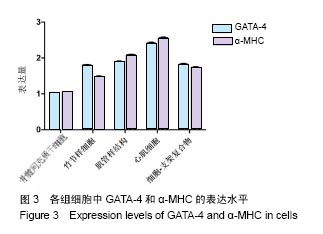| [1]Karlsson JO,Toner M.Long-term storage of tissues by cryopreservation: critical issues. Biomaterials. 1996;17(3): 243-256.[2]Gilbert TW,Sellaro TL,Badylak SF.Decellularization of tissues and organs.Biomaterials.2006; 27(19):3675-3683.[3]Mazo M,Ara AM,Pelacho B,et al.Mesenchymal stem cells for cardiac repair: preclinical models of disease.Springer Netherlands,2014.[4]Wu Y,Zhao RC,Tredger EE.Concise review: bone marrow-derived stem/progenitor cells in cutaneous repair and regeneration.Stem Cells.2010;28(5):905-915.[5]李琴,赵文婧,寇亚丽,等.心肌组织裂解液诱导骨髓间充质干细胞向心肌样细胞的分化[J].中国组织工程研究, 2011,15(10): 1726-1730.[6]Gottipamula S,Ashwin KM,Muttigi MS,et al.Isolation, expansion and characterization of bone marrow-derived mesenchymal stromal cells in serum-free conditions.Cell Tissue Res.2014;356(1): 123-135.[7]Wu JY,Liao C,Xu ZP,et al.A modified method to isolate and identify the adult mesenchymal stem cells from human bone marrow.Zhongguo Shi Yan Xue Ye Xue Za Zhi. 2006;14(3): 557-560.[8]Dominici M,Le BK,Mueller I,et al.Minimal criteria for defining multipotent mesenchymal stromal cells. The International Society for Cellular Therapy position statement. Cytotherapy. 2006;8(4): 315-317.[9]张涤生.组织工程学——现代生物生命科学的前沿[J].中国工程科学,2000,2(10):21-25.[10]]B ER U,Lohrenz A,Klingenberg M,et al.The effect of detergent-based decellularization procedures on cellular proteins and immunogenicity in equine carotid artery grafts. Biomaterials.2011;32(36): 9730-9737.[11]赵文婧,李琴,吴卓,等.心肌组织裂解液诱导骨髓间充质干细胞向心肌组织样结构的分化[J].中国组织工程研究, 2012,16(10): 1726-1730.[12]Zia S,Mozafari M,Natasha G,et al.Hearts beating through decellularized scaffolds: whole-organ engineering for cardiac regeneration and transplantation.Crit Rev Biotechnol. 2016; 36(4):705-715.[13]Jana S,Tefft BJ,Spoon DB,et al.Corrigendum to "Scaffolds for tissue engineering of cardiac valves" [Acta Biomater. 10 (2014) 2877-2893].Acta Biomater.2015;27:305.[14]Wang Q,Zhang C,Zhang L,et al.The preparation and comparison of decellularized nerve scaffold of tissue engineering.J Biomed Mate Res A.2014;102(12):4301-4308.[15]路英进,王秀丽,侯亮,等.心脏脱细胞支架的制备及其生物相容性[J].解剖学杂志,2016,39(2):203-206.[16]Schmitt B,Spriestersbach H,O H-Icí D,et al.Percutaneous pulmonary valve replacement using completely tissue-engineered off-the-shelf heart valves: six-month in vivo functionality and matrix remodelling in sheep.EuroIntervention. 2016;12(1):62-70.[17]Ye X,Wang H,Gong W,et al.Impact of decellularization on porcine myocardium as scaffold for tissue engineered heart tissue.J Mater Sci Mater Med.2016;27(4):70.[18]Reimer J,Syedain Z,Haynie B,et al.Implantation of a tissue-engineered tubular heart valve in growing lambs.Ann Biomed Eng.2017;45(2):439-451.[19]Eitan Y,Sarig U,Dahan N,et al.Acellular cardiac extracellular matrix as a scaffold for tissue engineering: in vitro cell support, remodeling, and biocompatibility.Tissue Eng Part C Methods. 2010;16(4):671-683.[20]Badylak SF,Freytes DO,Gilbert TW.Extracellular matrix as a biological scaffold material: Structure and function.Acta Biomaterialia.2009;5(1):1-13.[21]周沫.异种活性脱细胞肌腱支架的初步构建[D].南方医科大学, 2014.[22]Crapo PM,Gilbert TW,Badylak SF.An overview of tissue and whole organ decellularization processes. Biomaterials. 2011; 32(12):3233-3243.[23]郭志坤.现代心脏组织学[M].北京:人民卫生出版社,2007.[24]Rangappa S,Entwistle JW,Wechsler AS,et al. Cardiomyocyte-mediated contact programs human mesenchymal stem cells to express cardiogenic phenotype.J Thorac Cardiovasc Surg.2003;126(1): 124-132.[25]刘玲珑,吴卓,赵文婧,等.间充质干细胞分化为心肌细胞过程中细胞形态变化与Nkx2.5表达相关性的初步研究[J].基因组学与应用生物学,2015,34(2):234-239.[26]徐亦辰,刘玲珑,赵文婧,等.骨髓间充质干细胞分化为心肌样细胞相关基因表达与形态结构发生的关联[J].中国组织工程研究, 2017,21(13):1974-1979.[27]陈名武,刘唐威,庞玉生.转录因子GATA-4在心血管系统中作用的研究进展[J].中华心血管病杂志,2008, 36(1):85-87.[28]Hu DL,Chen FK,Liu YQ,et al.GATA-4 promotes the differentiation of P19 cells into cardiac myocytes.Int J Mol Med.2010;26(3):365-372.[29]Trowsdale J,Hanson I,Mockridge I,et al.Sequences encoded in the class II region of the MHC related to the 'ABC' superfamily of transporters.Nature.1990;348(6303):741-744.[30]Abraham WT,Gilbert EM,Lowes BD,et al.Coordinate changes in Myosin heavy chain isoform gene expression are selectively associated with alterations in dilated cardiomyopathy phenotype.Mol Med.2002;8(11):750-760.[31]James J,Martin L,Krenz M,et al.Forced expression of alpha-myosin heavy chain in the rabbit ventricle results in cardioprotection under cardiomyopathic conditions.Circulation. 2005;111(18): 2339-2346. |







